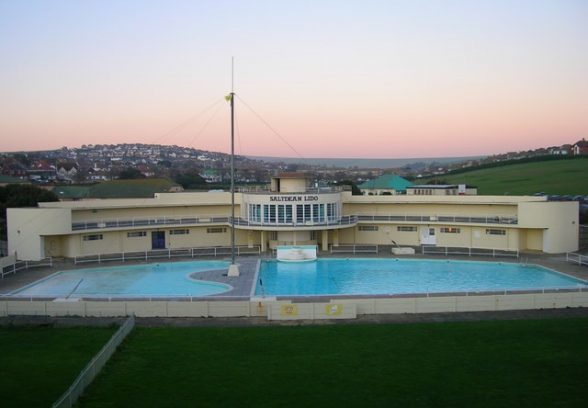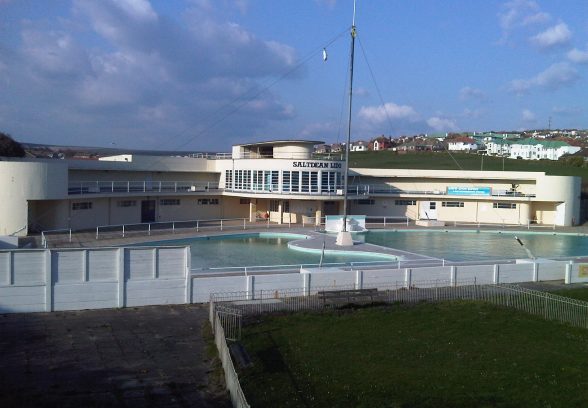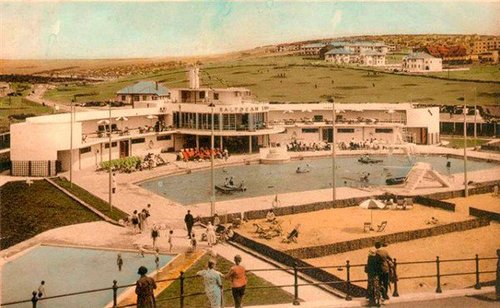This website uses cookies
This website uses cookies to enable it to function properly and to analyse how the website is used. Please click 'Close' to accept and continue using the website.





The Society has had a long involvement in Brighton’s Grade II* Saltdean Lido, described by Historic England as ‘probably the finest lido in England’ and the only one in the country to achieve Grade II starred status. Back in 1991, the Society published the report Farewell My Lido which was a pioneering document addressing the risks that this particular building type faced at a period of deep decline for British seaside tourism. We supported the original listing and subsequent listing upgrade of the building in 2010, and backed the local ‘Save the Saltdean Lido’ Group in their long struggle to secure a sustainable future for the lido– one that would both serve the local community and not come at the expense of the building’s architectural significance.
Saltdean Lido has had a difficult history. It was completed in 1938 to the designs of RWH Jones in the moderne style, and is often compared to classic moderne buildings of the period, the De La Warr Pavilion and the Midland Hotel. After only two summers of use however, it was closed down for the duration of the Second World War and used by the Auxiliary Fire Service, only reopening in 1964. Closed down once again in the 1990s, it has since been under threat of redevelopment and was placed on Historic England’s Buildings at Risk register in 2011.
We are therefore delighted to give our enthusiastic support to a planning and listed building consent application by the Saltdean Lido Community Interest Company. With the help of a £4.7m grant from the Heritage Lottery Fund and a further £2.3m from the Coastal Communities Fund, they have recruited architects Conran & Partners and put together proposals that will restore and revitalise this exceptional building and community asset.
Along with the restoration of the original signage and chimney, and the reinstatement of the central spiral staircase, the existing Crittall windows will be replaced with their modern equivalents, recognising the importance of the original fenestration. Existing ‘Esavian’ bi-fold doors that enabled the first floor of the rotunda to be fully opened to the outside will also be replaced like-for-like. The scheme respects the special architectural features of the building, while cleverly accommodating the many modifications necessary to equip the building for a variety of community uses, including a new library and a wedding and party venue, crucial to ensuring the building’s economic viability.
The proposals, which have been prepared with care and great sympathy to the original building, will help to bring back into public use one of the finest remaining examples of a 1930s lido in the country. This shows just what can be achieved by dogged long-term campaign work by passionate supporters. We look forward to visiting the restored lido, and celebrating the contribution of another rescued twentieth century building at risk to the ongoing regeneration of the British seaside.

Become a C20 member today and help save our modern design heritage.